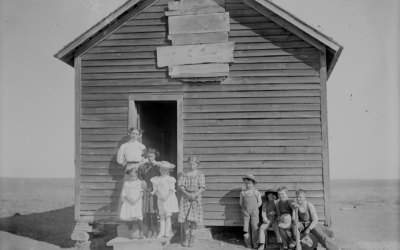The first settlers in Nebraska Territory found the lack of timber, except along creek and river banks, a problem. The consequent lack of fuel for heating and cooking caused an early search for firewood substitutes. No coal, at least in substantial quantities, was ever found in Nebraska, and settlers had to experiment with alternate fuels to satisfy their needs.
The burning of hay was tried chiefly in the central and northern parts of the state. At first settlers tried to burn loose hay, but this required a constant attendant to feed the stove. Later the hay was twisted into a “cat,” a number of which could be prepared ahead. Eventually, special hay burner stoves were invented and sold. One such hay burner stove donated to the Nebraska State Historical Society in 1934 uses removable, spring-operated, cylindrical magazines to feed hay into the stove.
As soon as corn was produced in any quantity it furnished several forms of fuel. Cobs were burned or cornstalks were used. At first cornstalks (like hay) were fed loose into the stove, but this required a constant stove attendant, and various methods of binding stalks together were soon devised.
Sunflowers were another projected source of fuel. It was believed by some (including Nebraska horticulturist and nurseryman Robert W. Furnas) that the tough, woody stalks of giant sunflowers would satisfy the average settler’s need for fuel. However, sunflower stalks were never widely used.
Corn itself was advocated as a fuel as early as 1862. The editor of the Nebraska Advertiser at Brownville pointed out that with corn selling at ten cents a bushel, coal at twenty cents a bushel, and wood at two dollars a cord, a farmer living far away from the Missouri River (a cheap means of transportation) would be financially ahead to use his corn for fuel. When the price of corn dipped too low, the use of corn to replace other types of fuel increased. But there were practical disadvantages: It was hard to ignite, and when finally aflame, produced such a hot fire that it damaged the stove.
West of the 100th Meridian settlers often used animal fuel, chiefly buffalo and cattle dung gathered from the open prairie. These “chips” burned rapidly with little blaze, producing hot coals suitable for heating and cooking. The use of alternate fuels was largely discontinued by 1900 when a growing network of railroads enabled enough coal to be shipped into the state cheaply enough to satisfy the need for fuel.
(August 1999)



